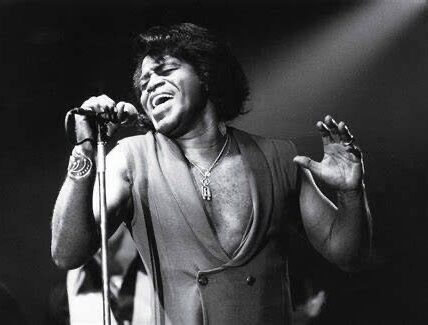The blues, a genre that has profoundly shaped the landscape of modern music, is characterized by its expressive melodies, melancholic lyrics, and distinctive rhythmic patterns. Emerging from the African American communities in the Deep South of the United States in the late 19th and early 20th centuries, the blues has evolved over time, influencing countless other musical genres and leaving an indelible mark on the world of music.
#### Origins and Early Influences
The blues originated in the Mississippi Delta, a region known for its rich musical heritage. Its roots can be traced to African American folk traditions, which combined elements of African musical practices with European influences. This synthesis gave rise to a genre that was both deeply personal and broadly expressive.
The term “blues” itself likely derives from the expression “blue devils,” referring to feelings of melancholy or sadness. These emotions are central to the blues, which often explores themes of hardship, love, and resilience.
Early blues music was deeply influenced by the work songs and spirituals of African American communities. These musical forms were characterized by call-and-response patterns, rhythmic improvisation, and a focus on storytelling. The field hollers of enslaved people and the spirituals sung in churches provided a foundation upon which the blues would build.
#### The Delta Blues
The Mississippi Delta is often considered the birthplace of the blues. The Delta blues style is characterized by its raw, emotive delivery and its use of slide guitar techniques. Pioneering musicians like Robert Johnson, Son House, and Charley Patton were instrumental in shaping this style.
Robert Johnson, in particular, is a legendary figure in the blues genre. His recordings from the 1930s, including songs like “Cross Road Blues” and “Hellhound on My Trail,” have become iconic. Johnson’s virtuoso guitar playing, haunting voice, and enigmatic persona have made him a central figure in the blues mythos.
The Delta blues typically features a solo performer accompanied by guitar, often with a slide used to create a mournful, expressive sound. This style emphasizes the emotional depth of the lyrics, which often deal with personal struggles and existential themes.
#### The Spread of the Blues
As the 20th century progressed, the blues began to spread beyond its Delta origins. The Great Migration of African Americans from the rural South to urban centers in the North, particularly Chicago, played a significant role in this expansion. This movement brought blues musicians into new environments where their music could reach a broader audience.
In Chicago, the blues underwent a transformation known as “Chicago Blues.” This style featured amplified instruments and a more urban sound. Influential artists such as Muddy Waters, Howlin’ Wolf, and Willie Dixon were central to this development. The electric guitar became a central instrument in Chicago blues, adding a new dimension to the music’s sound and making it more suitable for large audiences.
Muddy Waters, often referred to as the “father of Chicago blues,” played a crucial role in popularizing the electric blues sound. His recordings, including “Hoochie Coochie Man” and “Mannish Boy,” exemplify the energetic, driving rhythms and powerful vocals of the Chicago blues style.
#### The Blues and Rock ‘n’ Roll
The blues’ influence on rock ‘n’ roll is undeniable. As rock music emerged in the 1950s, it borrowed heavily from blues structures, rhythms, and themes. Early rock ‘n’ roll artists such as Elvis Presley, Chuck Berry, and Little Richard incorporated blues elements into their music, helping to create a new genre that would dominate the popular music landscape.
One of the most significant connections between blues and rock ‘n’ roll is the relationship between blues guitarists and rock musicians. Guitarists like B.B. King, who was known for his expressive lead guitar style, influenced a generation of rock guitarists. His playing, characterized by its soulful bends and vibrato, can be heard in the work of rock legends such as Eric Clapton and Jimi Hendrix.
Jimi Hendrix, in particular, is a prime example of the blues’ influence on rock music. His innovative guitar techniques and improvisational approach were deeply rooted in the blues tradition. Hendrix’s performances and recordings brought blues to new audiences and helped to bridge the gap between blues and rock.
#### The Evolution of the Blues
As the blues continued to evolve, it began to incorporate elements from other musical genres, leading to the development of various subgenres. These include:
– **Rhythm and Blues (R&B):** Emerging in the 1940s, R&B combines blues with jazz and swing influences. Artists like Ray Charles and Ruth Brown were key figures in this genre. R&B is characterized by its upbeat rhythms, smooth melodies, and a focus on vocal performance.
– **Soul:** Building on the foundation of R&B, soul music emerged in the 1950s and 1960s. Soul artists like James Brown and Aretha Franklin infused blues with gospel and funk elements, creating a genre known for its emotional depth and powerful vocals.
– **Blues Rock:** This genre blends blues with rock elements, creating a hybrid sound that emphasizes electric guitar riffs and energetic performances. Bands like The Rolling Stones and The Yardbirds, as well as guitarists like Stevie Ray Vaughan, played a significant role in popularizing blues rock.
– **Modern Blues:** In recent decades, contemporary blues artists have continued to innovate within the genre. Artists like Joe Bonamassa, Susan Tedeschi, and Derek Trucks have blended traditional blues with modern influences, keeping the genre fresh and relevant.
#### The Blues Today
The blues remains a vital and influential genre in the contemporary music scene. Festivals, clubs, and radio stations dedicated to the blues continue to celebrate and promote the music. Major cities around the world, from Chicago to London to Sydney, host blues events and house dedicated blues venues.
Modern blues musicians continue to push the boundaries of the genre while respecting its roots. Artists like Gary Clark Jr., who blends blues with rock and funk, and artists like Keb’ Mo’, who incorporates elements of folk and Americana, demonstrate the genre’s adaptability and enduring appeal.
The blues also enjoys a significant presence in popular culture. It has been featured in films, television shows, and documentaries, further cementing its status as an essential part of the musical landscape. Documentaries such as Martin Scorsese’s *The Blues* series and the recent Ken Burns series on American music highlight the genre’s historical significance and cultural impact.
#### Conclusion
The blues is more than just a genre of music; it is a profound expression of human experience and emotion. From its origins in the Mississippi Delta to its influence on modern music, the blues has continuously evolved while retaining its core elements of storytelling, emotional depth, and rhythmic innovation. It has shaped the development of numerous musical styles and continues to inspire new generations of musicians and listeners. As both a reflection of individual struggles and a testament to the resilience of the human spirit, the blues remains an enduring and essential part of the musical world.




